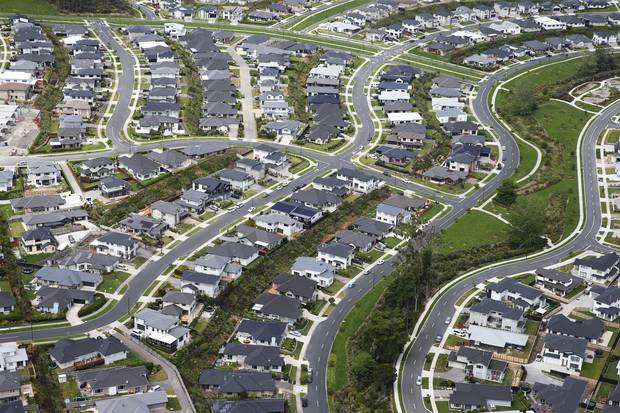Taika Waititi and Jemaine Clement introduced New Zealand to the idea of Kiwi blood-suckers but how many Kiwis would be keen to buy a house on Vampire Road?
Vampire Road is a real street - it's in Waldronville, Dunedin - but it's not the only Vampire-friendly street address in New Zealand.
Bell Block in New Plymouth has a Vampire Place and Bulls in Rangitikei has a Vampire Grove. While the names sound scary, the house prices in these locations aren't.
A house on Vampire Road could set you back just under half a million dollars, but you better be quick as property prices in the suburb have risen 14 percent in the last year.
Start your property search
Slightly cheaper would be a home on Vampire Place, in Bell Block, where the median property value is $445,000. Cheaper still are houses in Vampire Grove, in Bulls, where the median value is $280,000.
None of the agents OneRoof spoke to knew of any actual vampires in the areas with vampire addresses.
In fact, the inspiration for Vampire Place could be a vampire jet fighter.
Marlene Beech, an agent for First National in New Plymouth, couldn’t place Vampire Place at first but when told it was off De Havilland Drive the penny dropped.
She says the New Plymouth airport was originally off De Havilland Drive so “maybe it’s called after the vampire aeroplane.”
The de Havilland aircraft company no doubt also accounts for the name De Havilland Drive.

A de Havilland Vampire jet - a more likely inspiration for NZ's vampire street addresses. Photo / Andrew Bonallack
Beech says she doesn't know if the street name has put off buyers; it’s the same story in Dunedin, where Nicola Merrett, of Darling Realty, has sold a house on Vampire Road.
No one raised so much as an eyebrow at the name so it can’t be too scary, she says.
She, too, thinks the name comes from the aeroplane.
She couldn’t think of anywhere where people have been put off by the street name, saying people “either like the house or they don’t”.
But would you be put off buying a house if you had to write the following address every time you filled out a form?
Taumatawhakatangihangakoauauotamateaturipukakapikimaungahoronukupokaiwhenuakitanatahu. It's New Zealand's longest place name - and likely a nightmare for real estate agents when it comes to marketing real estate there. Homes in the surrounding region can sell for as low as $70,000 so whatever long hours you spend writing your address could be offset by an ultra-cheap mortgage.
But things could be worse. Horrible in fact. Tiako, just out of Timaru, has a Mount Horrible Road leading to the extinct volcano that had a short but productive life some two million years ago. It is now better known as the home of the magnificent Castle Claremont, the one time home of Governor Lord Ranfurly, and currently on the market.
The cheerful name is one of several grumpy South Island mountains: Mount Awful, Mount Awkward, Mount Bitterness, Mount Difficulty, Mount Dreadful, Mount Misery and Mount Hopeless and joins quite a few Mistakes, Deadman's Points and Doubtful Sound. Luckily early surveyors and explorers found Timaru, meaning the place of shelter.
For those who get a kick out of rude names, then Shag Point in Otago is the place to be. House prices in nearby Palmerston range from $85,000 to $300,000 - but when you live next to such a priceless name, the money isn't important.
The most common street name in New Zealand is George, which appears on 74 streets across the country. George Street in Parnell in Auckland is probably the priciest George Street to live on, with properties there often changing hands for many millions of dollars.
Research by OneRoof and its data partner Valocity found that street names do matter, though. OneRoof found that houses located on crescents in Auckland typically cost more than those on avenues, drives, streets, places, roads or lanes.
There were 5717 homes on inner Auckland crescents - in suburbs ranging from Remuera and St Heliers to Westmere - and in the past year 216 sold at a median sales price of $1.14 million.
Homes on avenues had the next highest sales price at $1.05m, then drives at $1m, roads at $986,000, lanes at $935,000, streets at $830,000 and places at $775,000.
It means buying a home on a crescent could offer better long-term value. On the flip side, hunting down homes on places could unearth bargains.
Ollie Wall, who sells luxury homes at Graham Wall Real Estate, said Remuera's prestigious Burwood Cres was a good example of why crescents could offer extra value.
Not only did it have less traffic because it wasn't a through road, but it also curled around a clifftop allowing more homes to share in the waterfront views.
"We've sold four homes each worth more than $10m on Burwood Cres in the last three years," Wall said.
Remuera is a suburb filled with expensive crescents, including Arney and Westbury Crescents. But then again it also had prestigious and expensive Victoria Ave and Arney and Garden Rds.
And so it's here that we need to issue a cautionary word before we get too carried away.
Ray White Remuera salesman Steen Nielsen said while it was interesting crescents typically had the most expensive homes, buyers were usually more concerned with a home's location or whether it had views or a jacuzzi.
"When buyers are choosing their next home there are so many things they will prioritise over whether it is a street or avenue or crescent," he said.
And according to Wall, the city's most prestigious street wasn't even a crescent - it was Paritai Drive in Orakei.

Orakei's Paritai Drive is famous for its views. Photo / Supplied
Part of the mystique that built around such addresses was their history.
Wall was currently fielding a raft of enquiries from successful Kiwi expats returning home from Hong Kong and New York.
While there might be fancier homes in Westmere for instance, many of the returnees were fixated on buying on Paritai Drive because living there had been a goal since they were kids.
"They've said: 'now I've made a lot of money and I've got my own young kids that's where I want to buy'. It's the dream for them," Wall said.
Crescents also had the most expensive homes on the North Shore with a median sales price of $1.05m, compared to avenues with a typical price of $990,000, according to the OneRoof-Valocity data.
Despite this, Bayleys Takapuna agent Victoria Bidwell said the most prestigious North Shore addresses were Clifton Rd and Brett, O'Neills and Minehaha Avenues.
"If I have a house for sale in one of those three avenues I simply advertise it as 'The Avenues' and I get a wave of people ring me and make enquiries," she said.

Modern developments such as Millwater have roads described as greens, rises, terraces, parkways and tracks. Photo / Doug Sherring
Outside of inner Auckland and the North Shore, most real estate agents said it often made little difference whether a home was on a crescent, drive or road.
Cool street names seem to matter more judging by the likes of Mansion Ct, Seacrest Drive, Picasso Drive and Lagoon Way.
And modern developments such as Millwater have taken it even further with roads also described as Greens, Rises, Terraces, Parkways and Tracks.
But Mike Pero real estate owner Grayson Furniss said there was method to names.
Roads ending in courts tended to be cul-de-sacs popular with families, while parades were on the water's edge and terraces tended to be raised roads with views.
Because Millwater was still a new development that hadn't yet translated into higher prices for homes on courts, parades and terraces.
"But in another 10 years when we have more history that may change," Furniss said.
"I would expect that your parades and courts and possibly terraces will probably give more of a premium."











